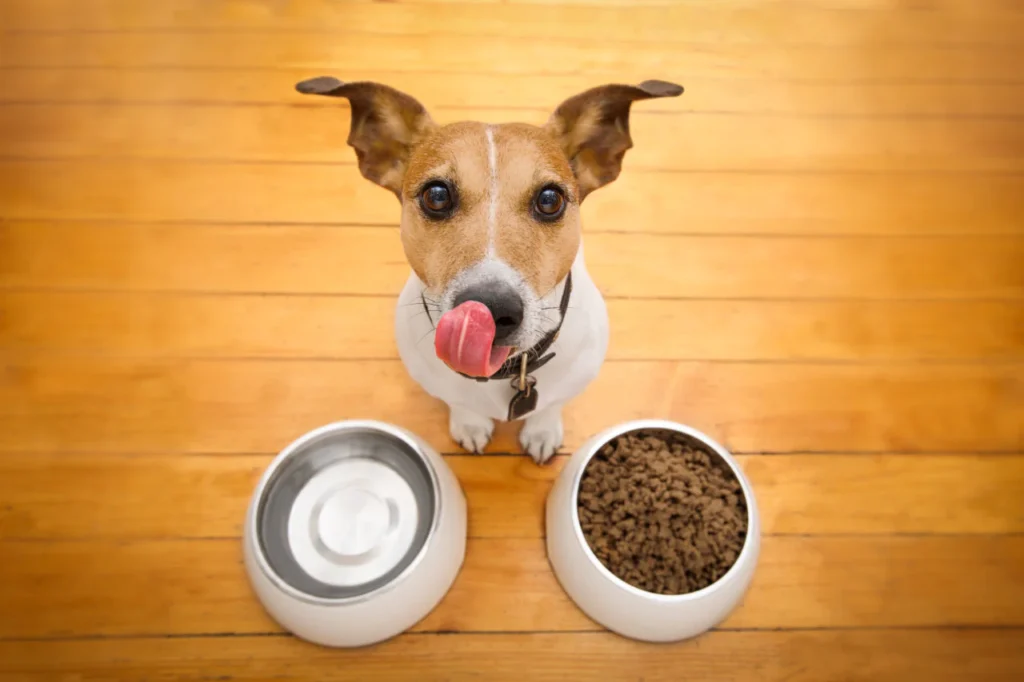Every dog is unique. Yet every dog needs the right balance of calories to stay healthy, active, and happy. Understanding your dog’s calorie needs helps you manage weight, prevent obesity, and support a long, energetic life. This guide will walk you through how to calculate your dog’s daily calorie needs using simple, practical steps.
Why Calories Matter for Dogs
Calories fuel every part of your dog’s body — from tail wags to long walks. When a dog eats more calories than it burns, excess energy becomes stored fat. Over time, that leads to weight gain and health issues. On the other hand, eating too few calories causes fatigue, loss of muscle, and a weaker immune system.
Knowing the right calorie range ensures your dog gets the balanced nutrition it deserves. It’s not just about numbers; it’s about matching energy intake with your dog’s real-world activity.
Step 1: Determine Your Dog’s Resting Energy Requirement (RER)
The foundation of calorie calculation starts with the Resting Energy Requirement (RER). RER is the number of calories a dog burns while resting — when breathing, digesting, and keeping warm.
You can calculate RER using a simple formula:
RER = 70 × (Body weight in kg)^0.75
Let’s say your dog weighs 10 kg.
The math would be: 70 × (10^0.75) = about 400 kcal/day.
That’s the energy your dog needs just to maintain normal body functions.
Step 2: Adjust for Activity Level
Once you have the RER, multiply it by a factor that reflects your dog’s activity, lifestyle, and health condition. These multipliers give you the Maintenance Energy Requirement (MER) — your dog’s daily calorie target.
| Dog Type | Activity Factor | Example |
| Neutered adult | 1.6 × RER | Most household pets |
| Intact adult | 1.8 × RER | More active dogs |
| Puppy (0–4 months) | 3.0 × RER | Growing quickly |
| Puppy (4 months–adult) | 2.0 × RER | Slower growth |
| Weight loss | 1.0 × RER | Vet-supervised diet |
| Working/sporting dogs | 2.0–5.0 × RER | Herding, running, agility |
| Senior dogs | 1.4 × RER | Lower metabolism |
Example:
If your neutered 10-kg dog has an RER of 400 kcal, multiply 400 × 1.6 = 640 kcal/day.
That’s your dog’s daily calorie need for steady weight and energy.
Step 3: Factor in Age, Breed, and Health
While formulas help, every dog’s metabolism is different. A Labrador Retriever burns more energy than a Shih Tzu at rest. Older dogs use fewer calories than playful puppies. Dogs with thyroid issues, diabetes, or joint problems may also need specific adjustments.
Always track how your dog’s body responds — energy levels, appetite, coat quality, and weight. Regular check-ups with your vet help fine-tune your approach.
Step 4: Check the Calories in Dog Food
Dog food packaging lists calories per serving or per cup, often as “kcal ME/kg.” Use that data to measure portions correctly. Compare the calorie content of different foods — dry kibble, wet food, or fresh meals — since their densities vary widely.
If you use treats, remember: calories add up fast. Treats should make up no more than 10% of your dog’s total daily intake. Replace high-calorie snacks with low-calorie options like carrot sticks or dog probiotics that support digestion while staying light on calories.
Step 5: Monitor Weight and Adjust Portions
Even precise math isn’t perfect. What matters is how your dog’s body changes over time. Weigh your dog regularly and adjust feeding portions as needed.
A simple rule:
● If your dog is gaining weight, reduce calories by 10–15%.
● If losing too much, increase calories slightly.
You can use an online calorie calculator for dogs to make this easier, or ask your vet to design a meal plan based on your pet’s needs.
Practical Example
Let’s take another case:
Bella is a 20-kg active adult Golden Retriever.
Her RER = 70 × (20^0.75) = about 660 kcal.
She’s quite active, so her MER = 660 × 1.8 = 1,188 kcal/day.
That means Bella should eat about 1,200 calories daily to stay fit and energetic. If she starts gaining weight, her owner can lower the intake to 1,000 kcal and reassess after two weeks.
Common Mistakes to Avoid
Guessing portions: Many owners rely on instinct or the scoop size, not actual calorie data. Always measure accurately.
Ignoring treats: Treats count as calories. Skipping that step often leads to hidden overfeeding.
Not adjusting with age: Puppies need more calories; seniors need less. Keep updating your calculations. You can read more about Weight loss for senior dogs.
Overfeeding “healthy” foods: Even premium foods can cause weight gain if overfed. Focus on total daily calories, not just food type.
Helpful Tools and Links
You can calculate calories easily with resources like Pet Nutrition Alliance’s Dog Calorie Calculator or American Kennel Club’s Feeding Guide. Both help you match feeding portions to your dog’s body weight and lifestyle.
To maintain digestive health, add probiotic supplements that support nutrient absorption and gut balance. A healthy gut means better calorie utilization and fewer digestive problems.
When to Consult a Veterinarian
If your dog’s appetite changes suddenly, or if you notice rapid weight gain or loss, speak with your vet. They can run metabolic tests and ensure your calorie calculations match your dog’s needs.
Veterinary input is crucial for dogs with health conditions or on weight-management diets.
Conclusion: Balance is Everything
Calculating your dog’s daily calorie needs isn’t just a math exercise — it’s an act of care. The right number of calories keeps your dog active, lean, and full of life.
Use these steps to build a feeding plan that fits your dog’s size, age, and energy level. Review regularly, adjust smartly, and enjoy the peace of mind that comes with knowing you’re fueling your best friend the right way.
If you want to go deeper, try pairing a calorie-controlled diet with a dog probiotic supplement that supports digestion and overall wellness. It’s a small step that delivers big results for your dog’s health and happiness.






